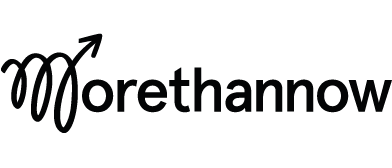A new model for inclusion.
Here at MoreThanNow, we're committed to a test, learn and adapt approach to culture and inclusion. It means identifying a specific and measurable challenge, developing one or more interventions that could have an impact and then testing the results.
But for this approach to be effective we need to focus on solving a specific problem. Ok, so we all want an inclusive culture, but what does that mean... and more importantly, where is it 'exclusive' at the moment?
When organisations share their demographic data, they tend to focus on under representation, a valuable metric but often the symptom rather than the cause. The burning question should go deeper - ‘is there something about the impression or experience of our organisation that makes it less attractive for our under-represented groups?’ Because unless we identify a challenge to solve, we're just throwing initiatives at the wall and hoping something will stick.
We start by gathering evidence: from the behavioural sciences, from stakeholders, from organisational data and from the experience of employees. It’s why we’re always excited to explore the potential of agile feedback tools that are easy to use and quick to deploy. The team at Culture Amp are pioneers in the field and industry leaders in the tech-heavy locale of their native Silicon Valley. We sat down with their People Scientist, Steven Huang, to find what impact their platform is having on inclusion at work...
Steven Huang : "Many companies that are working to build more diverse workforces make the mistake of focusing narrowly on recruiting - on adding larger numbers of employees from underrepresented backgrounds to the organization. But unless these companies spend equal time building a culture where people from all backgrounds can feel like they belong, their efforts are unlikely to be successful.
When a company culture fails to include everyone, employees from particular backgrounds are unlikely to advance at the same rates and more likely to leave - patterns which will ultimately make it much harder to hire employees from underrepresented backgrounds in the future.
With survey data, we can better understand the experiences of employees across the organization. We can identify whether particular groups feel that decisions are unfair, or that their voices aren’t heard. We can learn whether they believe that people like them belong in their organization and have an equal opportunity to succeed. We can identify whether particular groups feel less respected, or place less trust in their leaders.
In 2016, we launched a Diversity and Inclusion survey with our friends at Paradigm, receiving over 7,000 individual responses on topics such as belonging, opportunity, purpose and fairness; I’ve summarised our findings below:
- Concepts of diversity and inclusion are experienced differently amongst people of different backgrounds. Often these disparities in sentiment are large. They're often as we've expected.
- Sentiments of diversity and inclusion have correlations to workplace engagement, though the strength of correlation is not consistent across demographics or issues.
- The impact of how well represented a group is at their company (in proportion to the national population) on their perception of diversity at an organization is not consistent. Some groups with lower representation perceived diversity at their workplace more positively than groups with higher representation.
- Perceptions of diversity (measured via agreement to the statement, "My company builds teams that are diverse") vary significantly, but did not often have significant correlation with engagement.
- For groups that are well represented in the workplace, inclusion becomes more of a prominent concern than diversity. We believe diversity and inclusion to be separate issues that are closely related.
- Of all the factors we've surveyed, a feeling of belonging ("I feel like I belong at my company") has the highest correlation to engagement at the workplace for nearly every demographic. Notably, the correlation of belonging to engagement is strongest for groups that are historically under-represented.
- Based on our findings, we believe that diversity and inclusion initiatives that have a strong focus on belonging are likely to be more successful.
- Our survey was designed by data analysts from Culture Amp and social scientists at Paradigm, with input from industry leaders. Our goal was to get a clear picture of what’s going on in the industry and share insights broadly. To reach this goal, we started by offering the survey to companies for free and sharing aggregated findings. I’m sure how you can see how the results would allow the design of specific interventions for specific groups, in response to specific challenges.
While this is just one of many tools that can help us identify and address barriers to diversity and inclusion, we are excited about its potential to help the business community learn and grow."
Good behavioural design begins with firm foundations, and when it comes to inclusion that means listening to the voice of your employees as a critical source of evidence. Culture Amp allows us to do that with ease and at scale and we’re delighted to have them as a technology partner.
This is the third in our series of collaborative blog posts exploring how we provide better answers to D&I in the workplace. It’s part of our broader objective to bring together technology suppliers like Culture Amp and a wider network of academics, in-house practitioners and consultants, willing to work together and open to sharing progress.
If you share this vision, come and talk to us at MoreThanNow. We're partnering with some of the most progressive organisations in the world and we want your help.
If you would like to find out more about the application of behavioural science to diversity and inclusion:

